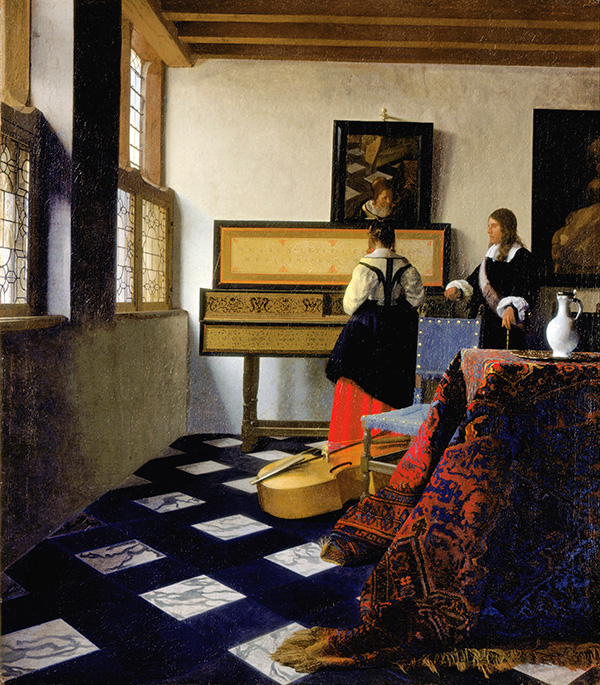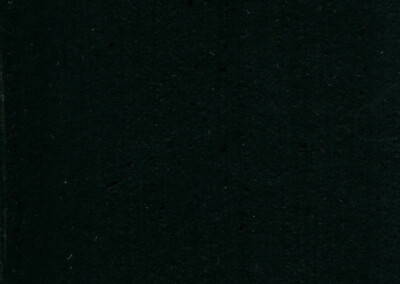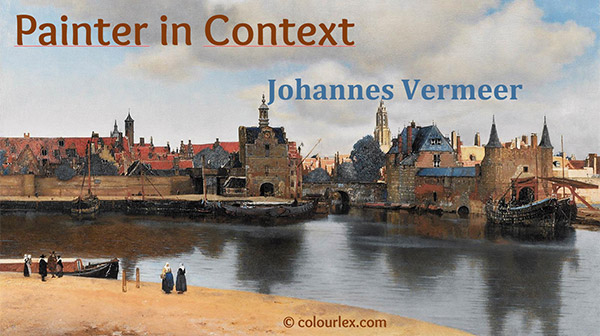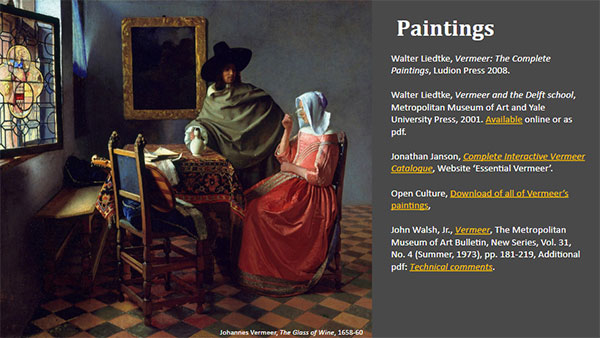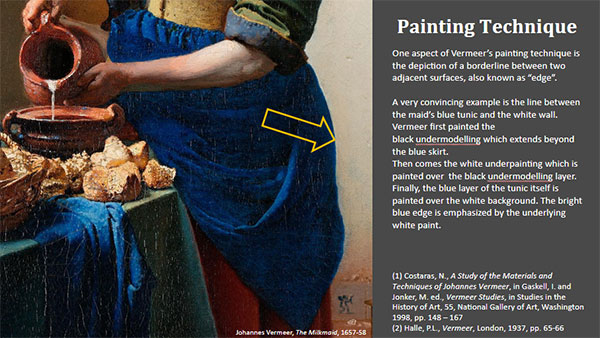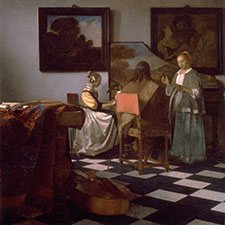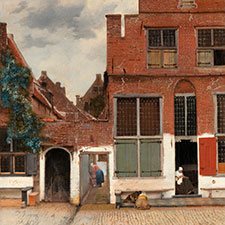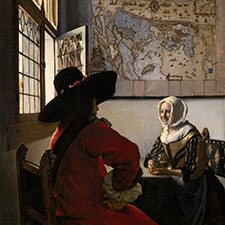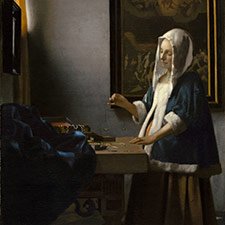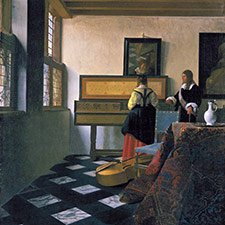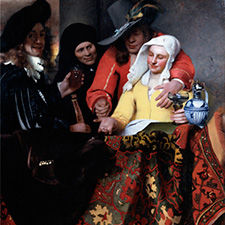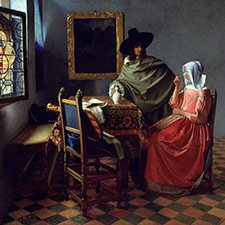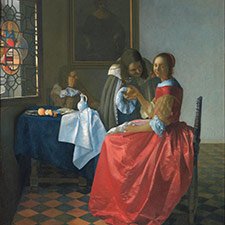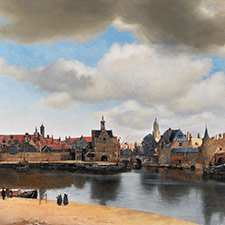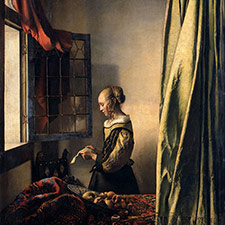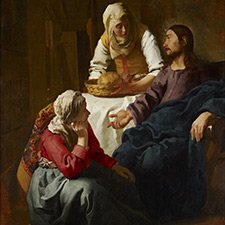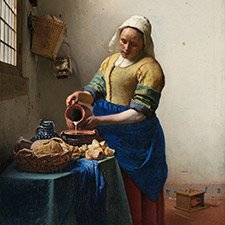Johannes Vermeer, The Music Lesson
1662-65Johannes Vermeer, The Music Lesson
1662-65Paintings sorted by Historical period | Painter | Subject matter | Pigments used
Overview
The painting ist also known as ‘Lady at The Virginals With a Gentleman’
Medium: Oil
Support: Canvas
Size: 73.3 x 64.5 cm
Art Period: Baroque
The Queen’s Gallery, Buckingham Palace
Inventory Number: RCIN 405346
High-resolution image at Google Cultural Institute
Pigments
Pigment Analysis
This pigment analysis is based on the work of Hermann Kühn of Doerner Institute in Munich (1) and on the research of the scientists at the National Gallery in London (2).

1 Bluish-black floor tiles: bone black.
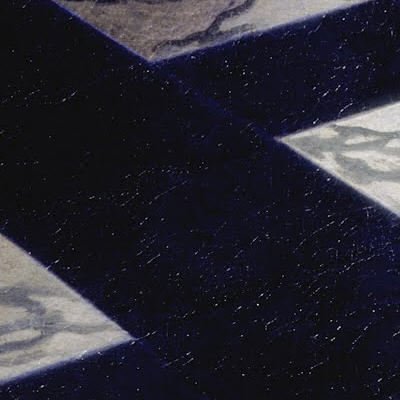
2 Bluish-gray floor tiles: lead white with a small amount of bone black and natural ultramarine. The diffuse blue contour of the dark tiles is achieved by a slight overlapping of the ultramarine layer into the white tiles. The marble pattern in the white tiles was painted wet-in-wet with a mixture of little ultramarine with a greater amount of lead white (3).
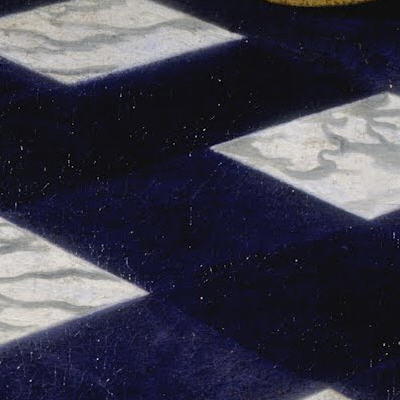
3 Gray-white wall in the upper part: lead white with a small amount of bone black and natural ultramarine.
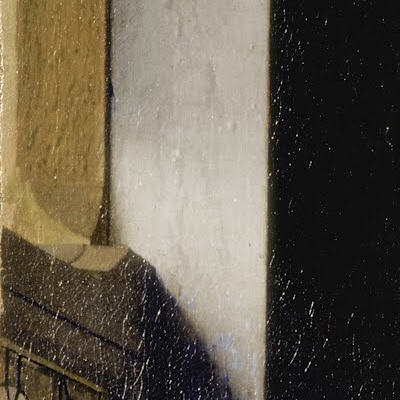
4 White parts of the window: lead white, black parts of the window: bone black.
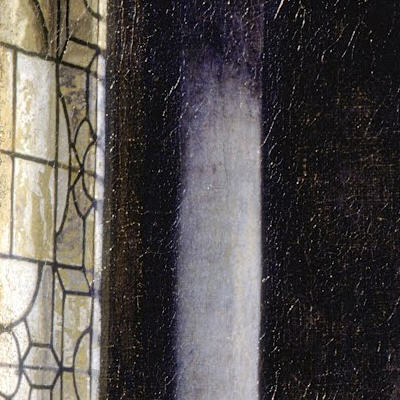
5 Dark blue wall, upper edge: lower layer contains lead white, madder lake, ochre, and bone black. The top layer consists of madder lake and natural ultramarine.
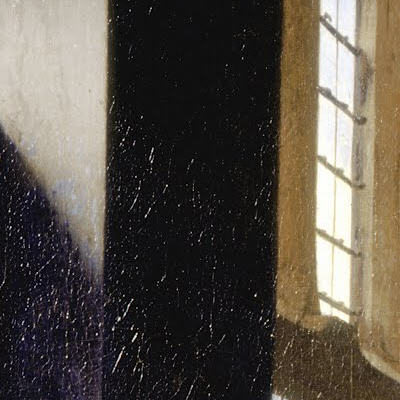
6 Brown wooden ceiling, right edge: layers of lead white, madder lake, red ochre, and natural ultramarine with a small amount of bone black.
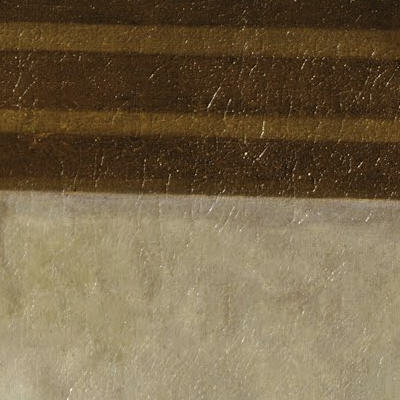
7 Violet pattern in the carpet on the table and also the man’s sash: natural ultramarine mixed with madder lake.
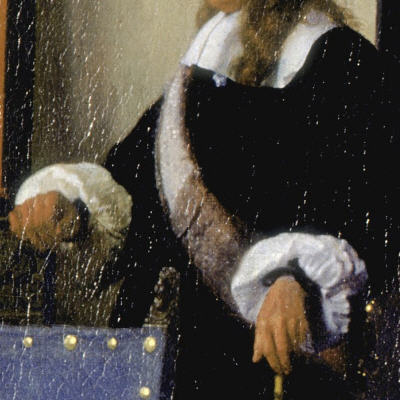
8 Red skirt of the woman: vermilion.
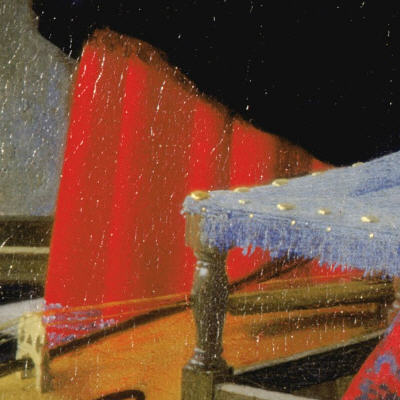
References
(1) Kuhn, H. A Study of the Pigments and Grounds Used by Jan Vermeer. Reports and Studies in the History of Art, 1968, 154–202.
(2) National Gallery London, Vermeer’s Palette, the website of National Gallery London.
(3) Gifford, E.M., Painting Light: Recent Observations on Vermeer’s Technique, in Gaskell, I. and Jonker, M., ed., Vermeer Studies, in Studies in the History of Art, 55, National Gallery of Art, Washington 1998, pp. 185-199.
(4) Costaras, N., A Study of the Materials and Techniques of Johannes Vermeer, in Gaskell, I. and Jonker, M. ed., Vermeer Studies, in Studies in the History of Art, 55, National Gallery of Art, Washington 1998, pp. 148 – 167.
Pigments Used in This Painting
Resources
See the collection of online and offline resources such as books, articles, videos, and websites on Johannes Vermeer in the section ‘Resources on Painters‘
PowerPoint Presentations
Painter in Context: Johannes Vermeer
A richly illustrated presentation on the painting technique and pigments employed by Johannes Vermeer specially crafted for Art Education. (Number of Slides = 24)
- Each presentation starts with the basic resources on the painter such as his biography, main catalogs of his paintings, and a bibliography.
- Next, you find slides describing the painting technique of the artist and the pigments he usually employed in his work.
- The majority of the slides show examples of paintings containing the specific pigments.
Slides showing the basic resources on the paintings of the Dutch Baroque painter Johannes Vermeer.
The painting technique of Johannes Vermeer is described and illustrated in the next slides.
The majority of the slides show important examples of paintings where Vermeer employed specific pigments. The slides are organized according to the color of the pigments.
Videos
Video: 'Vermeer: Master of Light, Music Lesson' by National Gallery of Art
Vermeer: Master of Light, part on “Music Lesson”, National Gallery of Art, 2001. Narrated by Meryl Streep, with commentary by Arthur Wheelock, curator of northern baroque paintings, National Gallery of Art, and David Bull, conservator. Short version
The original unabridged video can be found below or at Vermeer: Master of Light, total length 57:34 min.
The original unabridged video
Video: 'The Music Lesson' by ARTtube
Publications and Websites
Publications
(1) Kuhn, H. A Study of the Pigments and Grounds Used by Jan Vermeer. Reports and Studies in the History of Art, 1968, 154–202.
(2) Roger Harmon, ‘Musica laetitiae comes’ and Vermeer’s “Music Lesson”, Oud Holland, 113, No. 3 (1999), pp. 161-166
(3) Marjorie E. Wieseman, Vermeer and Music: The Art of Love and Leisure, exhibition catalog, National Gallery Company 2013.
(4) Janson, J., Critical Assessments: The Music Lesson, Essential Vermeer, website.
(5) Gaskell, I. and Jonker, M., Vermeer Studies, in Studies in the History of Art, 55, National Gallery of Art, Washington 1998.
Websites
National Gallery London, Vermeer’s Palette, the website of National Gallery London.
Janson, J., Johannes Vermeer, The Music Lesson, Essential Vermeer, website.
Janson, J., Critical Assessments: The Music Lesson, Essential Vermeer, website.

